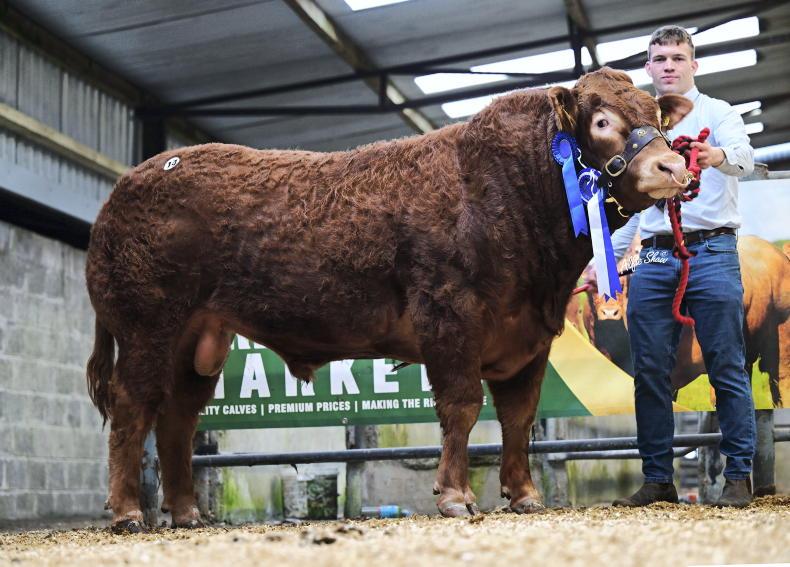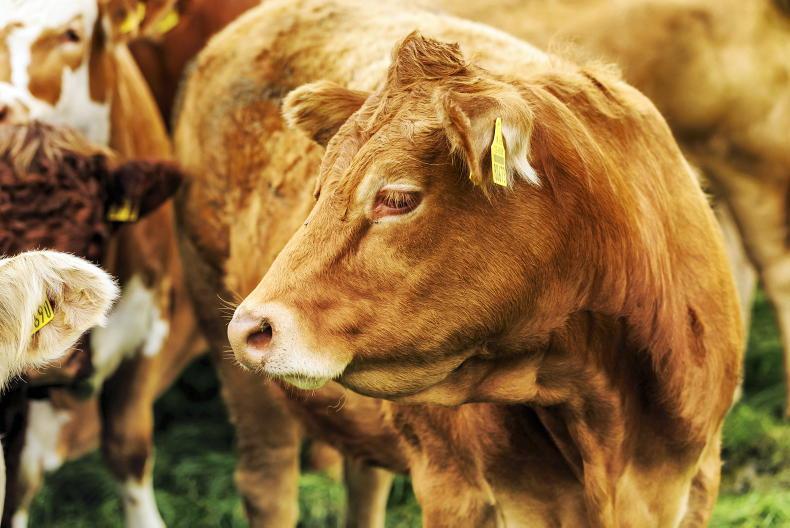The commercial beef value, or CBV for short, was borne out of the dairy beef index (DBI) and was designed to assist farmers at buying calves with good beef merits.
The DBI looks at both calving merits and beef merits, but farmers buying beef calves aren’t interested in whether they are short- or long-gestation, or hard or easy calving.
All they really want to know is how good they will be for beef in terms of carcase size, conformation and how long it takes them to finish.
The CBV was developed by Teagasc and ICBF and is put forward as the ultimate determinant of predicting beef value. Historical analysis using slaughter data shows that the CBV is indeed very accurate at predicting beef value.
This is the third calving season where the CBV has been available. However, its availability has been limited to only calves that have a valid genotype. In other words, the ICBF has refused to publish CBVs for non-genotyped calves in case the dairy farmer registers a calf to an incorrect but high beef merit sire in order to ‘game the system’ and falsely generate a high CBV.
This is despite the fact that dairy heifers are sold on the basis of EBI with or without a genotype and nobody raises any concerns about fraudulent sire data.
Dairy farmers were told that unless dairy beef calves were genotyped, and a CBV generated, that beef farmers wouldn’t have the confidence to buy their calves.
Cue the introduction of the National Genotyping Programme, which saw dairy farmers directly invest €2.3m into the scheme in 2024 to genotype the calves from the 575,000 cows enrolled. This is in addition to the millions of euro dairy farmers invest in the scheme through their ownership of the dairy co-ops.
Additional rearing costs were incurred, as the genotyping process resulted in delayed calf sales and extra postage costs.
So, has this investment in genotyping and the CBV been worth it? Have beef calf buyers rewarded farmers who produce calves with a higher CBV? At this moment in time, the answer to that is no. From what I can see, most beef calf buyers are largely unaware of the CBV, how it works, where to find it and what a good CBV is and what a bad CBV is.
All along, dairy farmers were told to use more sexed semen (which is costly to buy and results in lower conception rate). They were told to use more high DBI beef bulls with a high beef value within the DBI to produce calves with a high CBV.
It is in everyone’s interest for the CBV to work
These calves tend to have higher rates of calving difficulties and longer gestation lengths – both of which come at a cost in terms of poorer fertility after a hard calving and lost days in milk.
Having done all of the above, dairy farmers are now finding that the high CBV calf is not being rewarded in terms of calf price relative to lower CBV calves at the same age and size. Where is the incentive for them to continue on this path if the benefits of CBV are not being communicated to calf buyers?
Another major bugbear for farmers who have used Jersey genetics in the past is that the dam breed is still showing up on the mart board and blue card. An FRX or JEX on the dam breed, even where a calf has a really high CBV, imposes a severe price discount on the calf. This is understandable, as buyers may want to stay away from Jersey breeding, having perhaps been disappointed in the past.
However, the CBV supersedes the dam breed when it comes to assessing beef value, so why is the dam breed still showing where the calf is genotyped?
Farmers who have these calves are legitimately asking what the point is in making the extra effort to produce a better calf when the calves are going to be so heavily discounted anyway. The irony is, the person buying a high CBV calf with Jersey in the dam back breeding is likely getting extremely good value in that calf.
It is in everyone’s interest for the CBV to work. Too much has been invested in getting to this point for the advantages of CBV to slip away if dairy farmers lose confidence in it, and beef farmers don’t know about it.
The responsibility lies with the ICBF, Teagasc, ICOS and the Department of Agriculture to do more to promote the CBV by simplifying the mart boards, publishing the CBV in online mart catalogues, removing dam breed for genotyped calves and running an information campaign on CBV for dairy and beef farmers.









SHARING OPTIONS